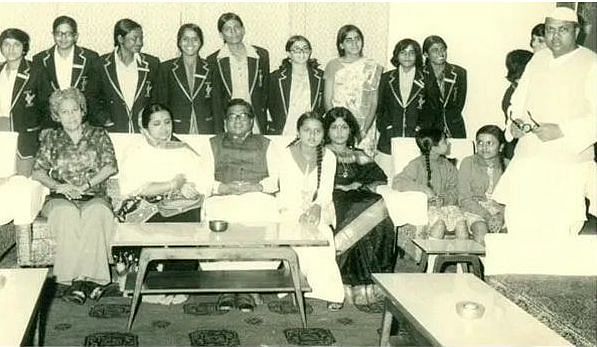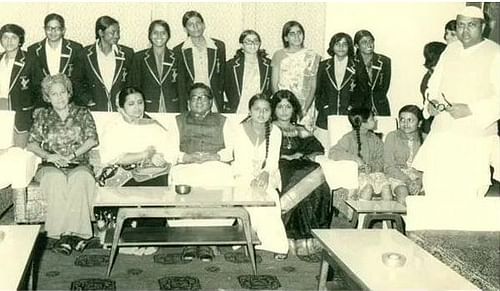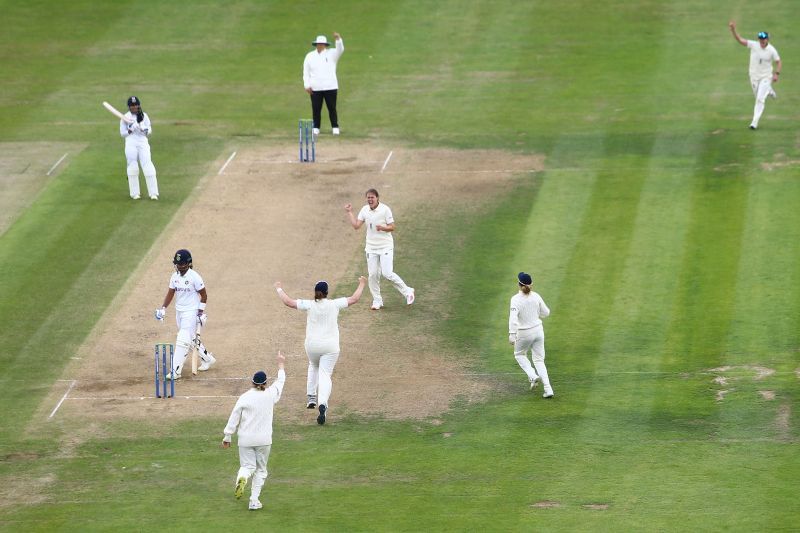
The longest format is cricket's real Test

There was plenty of drama, excitement, patience, and survival in the one-off Test match at Bristol. A perfect advertisement for Test cricket, one that gave boards enough reason to conduct women's Tests more often.
It took India 7 years to be able to showcase their grit and determination in the longest format. And they had to do it with the odds stacked against them in terms of practice and match-time due to the pandemic.
For the first 71 years of international women's cricket, series with multiple Tests were the norm. What changed? Put simply, the people running the sport.
Since 2005, when the ICC took over the administration of international women's cricket, a mere 15 Tests have been played. The longest format of the game has been lost in a sea of ODIs and T20s. But calls for its abolition have perhaps never been louder or more insistent than now.
The IWCC (International Women's Cricket Council) - a body staffed by female administrators, generally ex-players - that were responsible for the Future Tours Programme conducted a survey in 2000, five years before the merger. It showed that "all countries indicated support for a combination of Test and one-day cricket"; the Women's Cricket Association of India felt that "without Tests, women's cricket would be seen as having no Test players and the game would suffer."
Yet since 2005, the argument advanced by most boards has been that the focus must overwhelmingly be on the shorter formats; women's Test cricket is expensive and provides little financial return.
If you go back in time, the Indian women's first Test victory was in the presence of 25,000 spectators against the West Indies at Patna in 1976. Yes, this was our women playing Test cricket.
Test cricket is considered the pinnacle of the sport; the queen of all formats. Growing up, every cricketer dreams of playing at least one Test match for their country.
Men's and Women's Tests - so different, yet so similar
The Indian women's cricket team and Test cricket - these are words that you don't often get to string together in a sentence given the lack of four-day internationals that India, or for that matter, any international team, play.
However, the players are expected to fit more overs per hour in the women's game than the men's: 17 as opposed to 15. And so a full day's play in a women's Test match should include 100 overs, rather than the 90 we expect to see in the men's game.
The cricket field also has smaller dimensions in the women's game; the boundaries must be between 55 and 70 yards (50.29 and 64.01m), in contrast to the 65 to 90 yards (59.44 to 82.30m) required in men's Tests. Since the game is only played for 4 days, the number of runs needed to enforce a follow-on is 150, which is 50 less than what it is for the men.
The reason it is rated so highly by players and fans alike is because the format, as its name suggests, is considered the 'real test' of cricket. The players have to bring their 'A' game as this format really tests their skill and composure since the game goes on for 5 days for men and 4 days for women. This version of international cricket is certainly more taxing than any other.
The game, played in whites, is very similar to life. You get a second chance to field, bowl, or bat, irrespective of your performance. Every day you have to dig a little deeper, work harder and start all over from ball 1.
Sometimes you have to score quickly or just defend to save your team. At times, you tend to relax a bit more, and at times, you try too hard to get wickets. You will also see the most bizarre field placements in this format.
But the format seems to be losing its allure among both players and spectators as the long format also means exhaustion for the players, and at the same time, could also be boring for the spectators.
Women's Tests - a dying format?

Test cricket is no different in the women’s game as well, with only Australia and England playing international Test matches (as part of the coveted Ashes) frequently.
No other women’s team have played as consistently as them, and the last time that India played a red-ball match (before the Bristol comeback) was way back in 2014 against South Africa at Mysore. The home team won that match by an innings and 34 runs, with Thirush Kamini (192) and Punam Raut (130) leading the way with the bat, followed by a disciplined display from the bowling attack.
Over the years, the zeal to play Tests has gradually reduced because of the sheer entertainment the shorter formats, especially the T20s, offer to the audience. Thus, there has been a significant decline in the number of Tests the women’s team has played in the past 2010 decades.
From playing at least 8 matches in every decade since the 1970s, the team has played only two in the 2010s. Overall, they have played 37 Tests, won 5 and lost 6, while 26 have ended in draws. Interestingly, the veteran stars - Mithali Raj and Jhulan Goswami - who both made their Test debuts in 2002, have only played 11 Tests despite being around for almost 20 years.
The Indian team have been very successful in the longest format of the game. But as they have played little to absolutely no Test cricket for a while now, it wasn't an easy outing for them against England in Bristol.
England had the edge in terms of experience heading into Bristol. As many as 11 players in their squad had played a Test before, while the corresponding number for India is just 8. The cumulative number of Tests for England (47) was 17 more than India (30). It was always going to be a tough affair to adjust to the playing conditions after such a long break since last playing the format.
Therefore, in order to avoid such a thing, the board must invest more on Women’s cricket at the grassroots. They must groom players the way they did in Men’s cricket, and only then will there be an increase in the quality of cricket played domestically.
The only Test India Women have lost to England Women was at Jamshedpur in what was an absolute thriller way back in 1995. Chasing 128, the home team collapsed from 105 for 5 to 125 all-out, going down by a mere two runs.
This Indian Women’s Team were also staring at a record fourth consecutive win in Test cricket after having won their previous three Test matches - at Taunton, Wormsley, and Mysore (against South Africa). Victory in Bristol would have seen India break Australia’s record for the most consecutive wins in Test cricket.
Unfortunately, it wasn't meant to be, with the Bristol Test proving to be no more than a moral victory. An unbeaten 104-run partnership between Sneh Rana and Taniya Bhatia for the ninth wicket in the second innings saw India salvage a draw in the final session of play.
Apart from boasting the richest cricket board in the world, India also has the biggest cricketing audience and sponsors pool. India's women's team and their gripping Test match showed the value they can bring to the cricketing world.
It is now time for the cricket boards and administrators to make the right move. If the BCCI gets the message, we should soon see more Test matches for the Indian women and more first-class games at the domestic level.